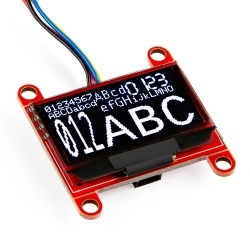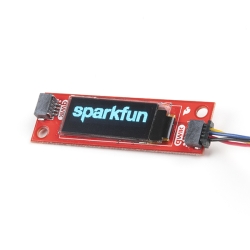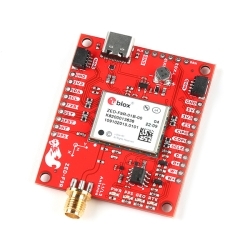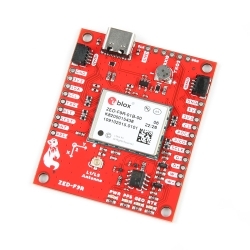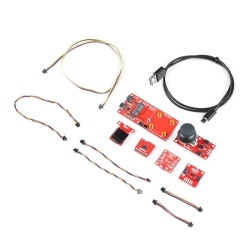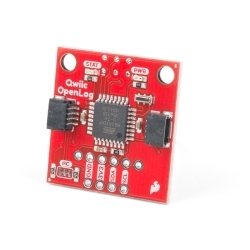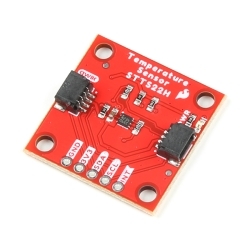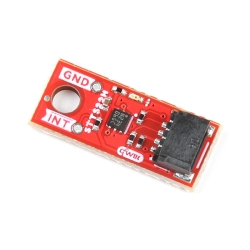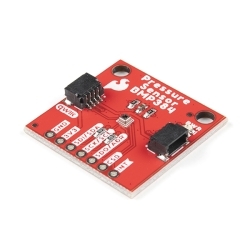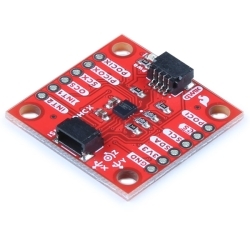SparkFun Micro OLED Breakout (Qwiic)
The SparkFun Qwiic Micro OLED Breakout is a Qwiic enabled version of our popular MicroView and micro OLED display!
Product Overview
The SparkFun Qwiic Micro OLED Breakout is a Qwiic-enabled version of our popular Micro OLED display! The small monochrome, blue-on-black OLED screen presents incredibly clear images for your viewing pleasure. It’s “micro,” but it still packs a punch --- the OLED display is crisp, and you can fit a deceivingly large amount of graphics on there. This breakout is perfect for adding graphics to your next project and displaying diagnostic information without resorting to a serial output, all with the ease of use of our own Qwiic Connect System!
This version of the Micro OLED Breakout is exactly the size of its non-Qwiic sibling, featuring a screen that is 64 pixels wide and 48 pixels tall and measuring 0.66" across. But it has also been equipped with two Qwiic connectors, making it ideal for I2C operations. No soldering is required to connect it to the rest of your system. However, we still have broken out 0.1"-spaced pins in case you prefer to use a breadboard. We've also added two mounting holes and a convenient Qwiic cable holder incorporated into a detachable tab on the board that can be easily removed thanks to a v-scored edge. We've even made sure to include an I2C pull-up jumper and ADDR jumper on the back of the board, so if you have your own I2C pull-ups or need to change the I2C address of the board, you have options!
Note: The I2C address of the Micro OLED is 0x3D and is jumper selectable to 0x3C. A multiplexer/Mux is required to communicate to multiple Micro OLED sensors on a single bus. If you need to use more than one Micro OLED sensor consider using the Qwiic Mux Breakout.
-
-
-
-
-
-
-
-
-
-
-
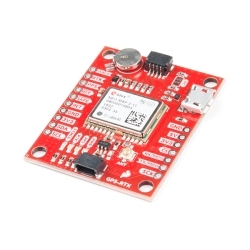 SparkFun GPS-RTK Board - NEO-M8P-2 (Qwiic)
Special Price Current price: $179.95 Regular Price Original price: $269.95In stock
SparkFun GPS-RTK Board - NEO-M8P-2 (Qwiic)
Special Price Current price: $179.95 Regular Price Original price: $269.95In stock
Features & Specs
- 2x Qwiic Connectors
- Operating Voltage: 3.3V
- Operating Current: 10mA (20mA max)
- Screen Size: 64x48 pixels (0.66" Across)
- Monochrome Blue-on-Black
- I2C Interface
- Built-in 4.7kΩ Pull-up Resistors
- Selectable I2C Address
- 0x3D (Default), 0x3C (Alternate)
- Jumpers
- I2C Pull-up Resistors
- I2C Address
- Dimensions: 1.08" x 1.17"
Documentation
- Schematic (v11)
- Eagle Files (v11)
- Board Dimensions
- Hookup Guide
- Datasheet (SSD1306)
- Fritzing Part
- Arduino Library
- Micro OLED Breakout
- Qwiic OLED
- Qwiic Micro OLED Python Package
- Qwiic Info Page
- GitHub Hardware Repo
Customer Reviews


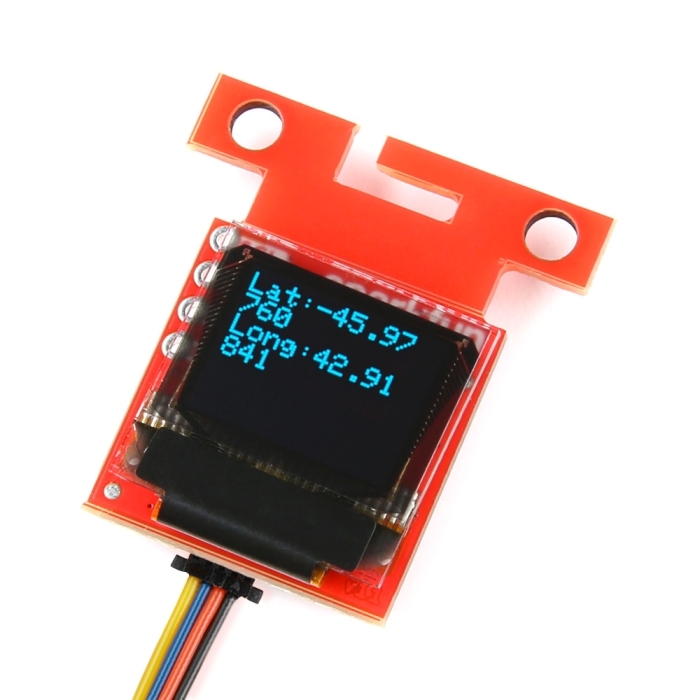
 Hookup Guide
Hookup Guide Schematic
Schematic Datasheet (SSD1306)
Datasheet (SSD1306)